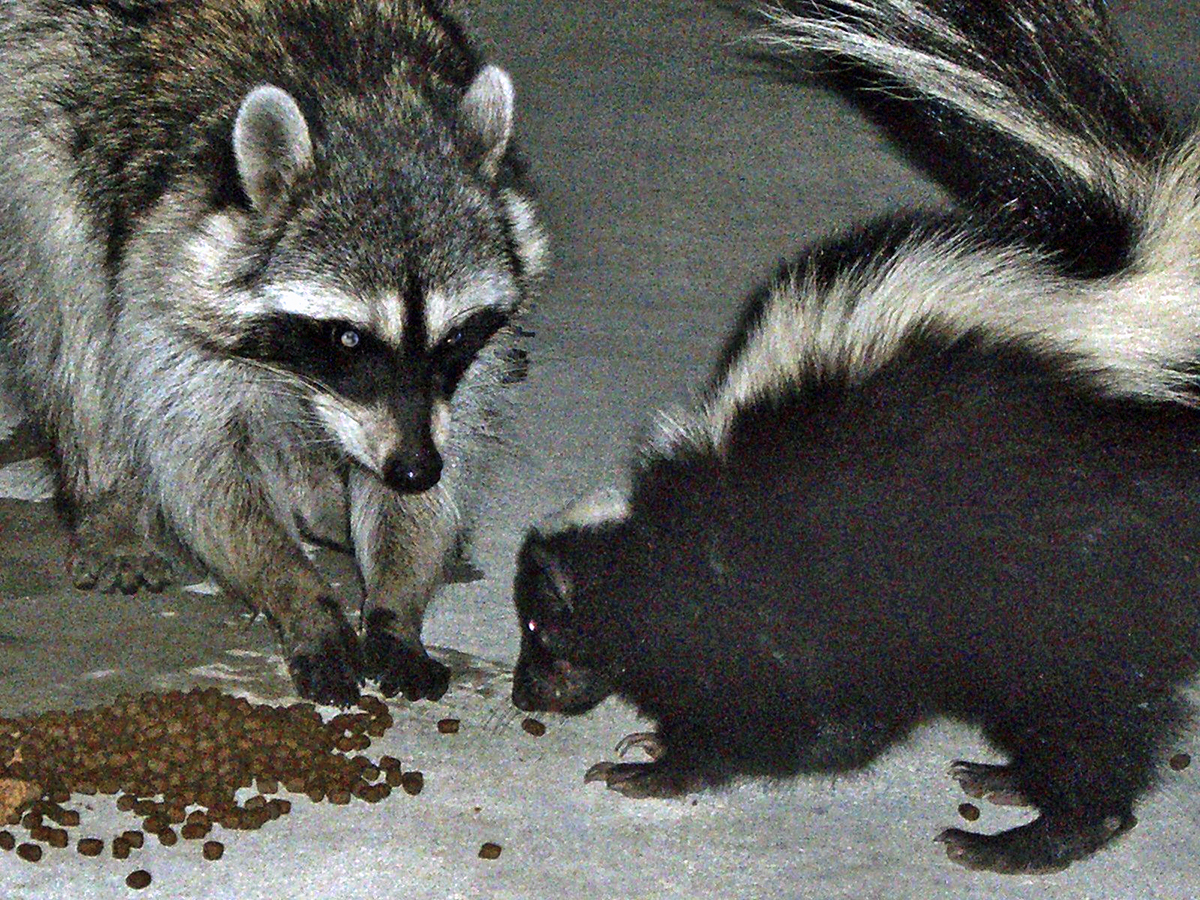
By Soni Cochran, Extension Associate
Recently, a Greeley, Colorado woman found a baby raccoon (kit) in her backyard abandoned by its mother. The Greeley Tribune (July 2, 2018) reported the woman brought the kit into the home. When other people heard about the kit, they stopped by the woman’s home to visit the animal. The woman did contact a shelter in the area hoping they could rehabilitate the animal. In turn, the shelter contacted the local health department to ask if it could be tested for rabies. The kit did test positive for rabies and now 21 people are receiving treatments for exposure.
This report came only a few weeks after CNN reported a 46-year old Georgia woman was the victim of an unprovoked attack by a bobcat while she was standing in her driveway. The bobcat later tested positive for rabies. These stories are important reminders to be aware of the risks of possible rabies exposure and steps needed to prevent the virus.
According to the Centers for Disease Control and Prevention (CDC), you can only get the rabies virus when you have direct contact to the saliva or brain/nervous system tissue of an infected mammal. It is usually spread by the bite of an infected animal or if the animal’s saliva gets into your eyes, nose, mouth or an open wound like a scratch.
The most recent report by the Nebraska Department of Health and Human Services states rabies has cyclical peaks every 5–7 years. Common wildlife species in our area which can be reservoirs for rabies include raccoons, skunks, bats and fox. Domestic animals include dogs, cats, ferrets and livestock.
Vaccination of domestic animals is required by Nebraska statutes and continues to be a critical, safe, and cost-effective component of rabies control to safeguard both animal and public health from this fatal virus. Source: Nebraska Department of Health and Human Services.
RABIES SYMPTOMS
There are two forms of rabies: dumb and furious. Animals exhibiting dumb rabies appear calmer than normal or expected. This doesn’t mean they are affectionate, it means they will not run away from humans. Dumb rabies is more commonly seen in livestock and bats. Furious rabies is more common and mammals with this form of rabies are unusually aggressive, display odd behaviors and may or may not be displaying the stereotypical “foaming at the mouth.” Here are symptoms you may see in wild animals:
• Unprovoked aggression (furious rabies). Some animals may attack anything that moves, or even inanimate objects. Furious rabies is typical when the virus infects animals like dogs, skunks and raccoons.
• Unusual friendliness (dumb rabies).
• Animals stumble, fall, appear uncoordinated or disoriented, and wander aimlessly.
• Paralysis beginning in the hind legs/throat. Animal may bark, whine, drool, choke or froth at the mouth.
• Nocturnal animals may become unusually active during the day (important: some nocturnal animals are active during the day when they are feeding their young).
• Raccoons walk as if they are on very hot pavement.
You can’t tell if an animal is rabid just by its behavior. Other diseases, like distemper, or exposure to chemicals (like antifreeze) may also cause an animal to act “rabid.” The only way to prove an animal is rabid is to test its brain tissue in a laboratory. There is no test for rabies available on living animals.
BATS AND RABIES
Less than 1/2 of 1 percent of bats have rabies. Bats with dumb rabies are not aggressive and most likely found on the ground or in structures. Bites by bats can be difficult to detect so extra precaution are warranted. Nebraska has adopted protocols for handling situations where there may have been bat-human exposure. These protocols assume a person was bitten if:
• He/she wakes up to find a bat in the room.
• A bat was found in a room with someone who has difficulty communicating (e.g., a child or a person who is intoxicated, otherwise mentally impaired or sleeping).
• A bat made contact with a person.
In any of these situations, it is important to capture the bat. Wear thick gloves, place a box over the bat. Do not swat at the bat or damage the bat’s head during capture. Do not release the bat. Instead, call local health officials or Nebraska Health and Human Services at 402-471-2937. In Lincoln, you can contact Animal Control at 402-441-7900 if the bat is in the home and can be located. If you have any concerns about exposure, contact your physician or health professional.
PREVENT RABIES EXPOSURE
• Visit your veterinarian regularly and keep rabies vaccinations up-to-date for your pets and livestock.
• Keep cats indoors and your dogs under direct supervision.
• According to the CDC, report all stray animals in your neighborhood to your local animal control since these animals may be unvaccinated or ill.
• Do not feed, touch or handle wild animals. Leave orphaned animals alone. Baby animals appear to be orphaned when they are not.
• If you find a wild animal and are concerned it is sick, injured or abandoned, contact your local Animal Control, Nebraska Game and Parks Commission or a veterinarian before attempting to remove it.
• Follow the protocols for bats as described in this article.
FOR MORE INFORMATION
A list of rabies resources is online at http://lancaster.unl.edu/pest